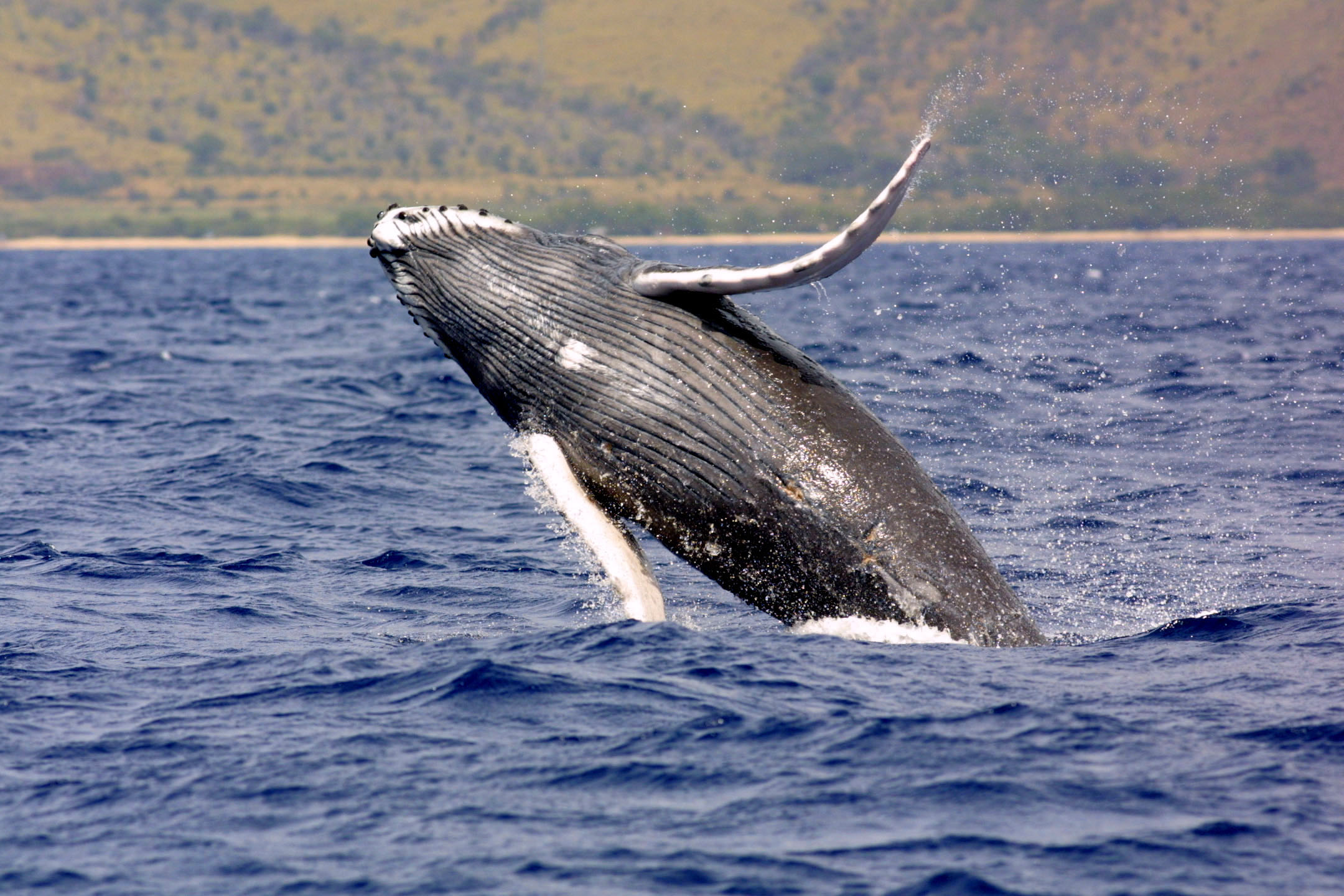Difference between revisions of "Template:POTD protected"
Westarctica (talk | contribs) |
Westarctica (talk | contribs) |
||
| Line 1: | Line 1: | ||
{| role="presentation" style="margin:0 3px 3px; width:100%; text-align:left; background-color:transparent; border-collapse: collapse; " | {| role="presentation" style="margin:0 3px 3px; width:100%; text-align:left; background-color:transparent; border-collapse: collapse; " | ||
|style="padding:0 0.9em 0 0;" | [[File: | |style="padding:0 0.9em 0 0;" | [[File:Humpback whale noaa.jpg|300px]] | ||
|style="padding:0 6px 0 0"| | |style="padding:0 6px 0 0"| | ||
The '''[[humpback whale]]''' is a species of baleen whale. One of the larger rorqual species, adults range in length from 12–16 m (39–52 ft) and weigh about 36,000 kg (79,000 lb). The humpback has a distinctive body shape, with long pectoral fins and a knobbly head. It is known for breaching and other distinctive surface behaviors, making it popular with whale watchers. Males produce a complex song lasting 10 to 20 minutes, which they repeat for hours at a time. Its purpose is not clear, though it may have a role in mating. | |||
Found in oceans and seas around the world, humpback whales typically migrate up to 25,000 km (16,000 mi) each year. Humpbacks feed in [[Southern Ocean|polar waters]], and migrate to tropical or subtropical waters to breed and give birth when they fast and live off their fat reserves. Their diet consists mostly of [[krill]] and small fish. Humpbacks have a diverse repertoire of feeding methods, including the bubble net technique. Like other large whales, the humpback was a target for the [[whaling]] industry. Once hunted to the brink of extinction, its population fell by an estimated 90% before a 1966 moratorium. | |||
<p><small> | <p><small>Photo Credit: NOAA</small></p> | ||
[[:Category:Images|'''(More Images)''']] | [[:Category:Images|'''(More Images)''']] | ||
<div class="potd-recent" style="text-align:right;"> | <div class="potd-recent" style="text-align:right;"> | ||
Revision as of 21:01, 1 October 2022

|
The humpback whale is a species of baleen whale. One of the larger rorqual species, adults range in length from 12–16 m (39–52 ft) and weigh about 36,000 kg (79,000 lb). The humpback has a distinctive body shape, with long pectoral fins and a knobbly head. It is known for breaching and other distinctive surface behaviors, making it popular with whale watchers. Males produce a complex song lasting 10 to 20 minutes, which they repeat for hours at a time. Its purpose is not clear, though it may have a role in mating. Found in oceans and seas around the world, humpback whales typically migrate up to 25,000 km (16,000 mi) each year. Humpbacks feed in polar waters, and migrate to tropical or subtropical waters to breed and give birth when they fast and live off their fat reserves. Their diet consists mostly of krill and small fish. Humpbacks have a diverse repertoire of feeding methods, including the bubble net technique. Like other large whales, the humpback was a target for the whaling industry. Once hunted to the brink of extinction, its population fell by an estimated 90% before a 1966 moratorium. Photo Credit: NOAA |